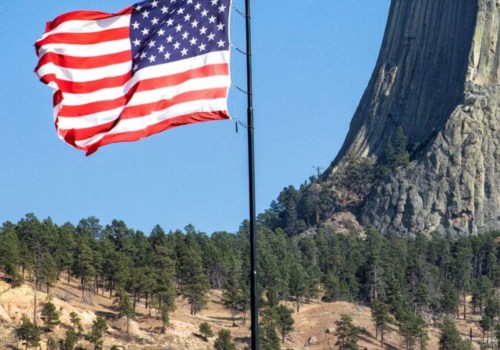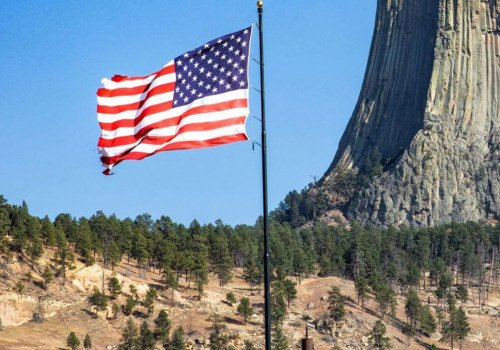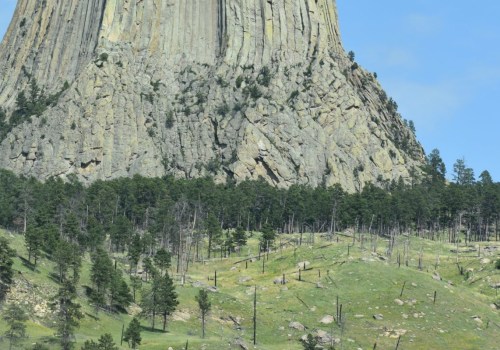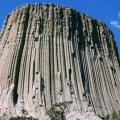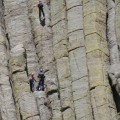A sacred site for more than 20 Native American tribes, Devils Tower was designated as the first national monument in the United States in 1906 by President Theodore Roosevelt. Roosevelt made Dodge's translation the official name of the tower, but along the way, the apostrophe in “Devil's Tower” was dropped due to a clerical error. The error was never corrected, and to this day, the tower is simply called “Devils Tower”. Long before the visit of Hollywood aliens, Devils Tower stood as a cultural and beautiful icon in Eastern Wyoming.
The oldest rocks visible in the Devils Tower National Monument were deposited in a shallow sea during the Triassic period, 225 to 195 million years ago. To this day, Native American tribes continue to hold sacred ceremonies in the Devil's Tower, such as dancing in the sun and other communal rituals. Camping near Devils Tower offers views of the National Monument and the chance to escape the daily grind. Presumably, if the Devil's Tower were a volcanic plug, any volcanic created by it volcanic ash, lava flows and volcanic debris would have eroded long ago.
As rain and snow continue to erode the sedimentary rocks surrounding the base of the Tower, and the Belle Fourche River washes away the debris, more Devils Tower will be exposed. On June 28, 1937, American-German mountaineer Fritz Wiessner became the first person in history to freely climb the Devils Tower. Geologists Carpenter and Russell studied Devils Tower in the late 19th century and concluded that the Tower consisted of an igneous intrusion. Devils Tower is a sacred site in the eyes of several tribes of the Native American Plains, including the Sioux Lakota, Cheyenne and Kiowa.
On the way to the top of the Devil's Tower, they may encounter hazards such as falling rocks, poison ivy, and thorny plants. Nearly 900 feet high from base to top, Devils Tower called Mato Tipila (“Bear Lodge”) next to the Lakota is a popular tourist destination, as well as a major climbing attraction. About 20% of the proceeds raised by the National Park Service stays with them, while 80% goes to the preservation of the Devils Tower National Monument. When pioneers looking for a new life in the West traveled in wagons along Oregon, California and Mormon Trails, many settled in the Devils Tower area, seeing that there was enough land for livestock and agriculture. Structurally, the rock formation of the Devils Tower closely resembles that of the Rocky Mountains of millions of years ago.
Other theories have suggested that Devils Tower is a volcanic plug or that it is the neck of an extinct volcano. Known as Mato Tipila by the Lakota, this iconic monument also passes Bear's Tipi (Arapahoe), Bear's House (Raven) and Tree Rock (Kiowa believed that the sides of the tower were scratches left by a bear's claws).
